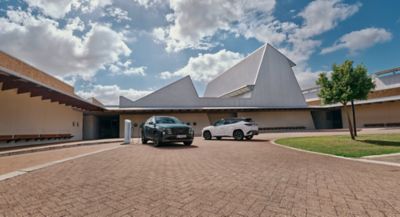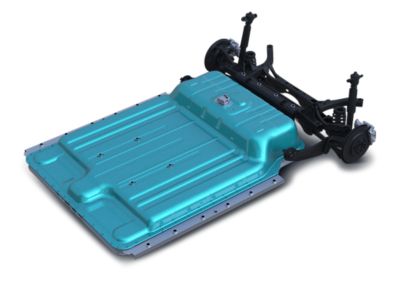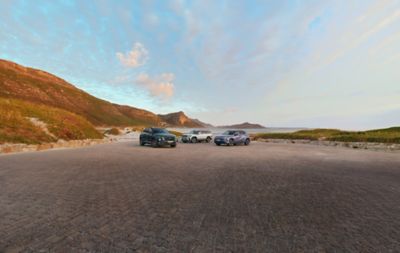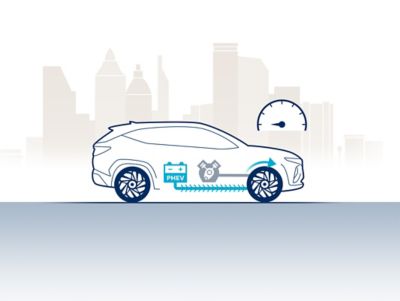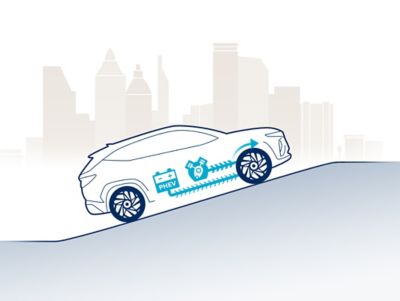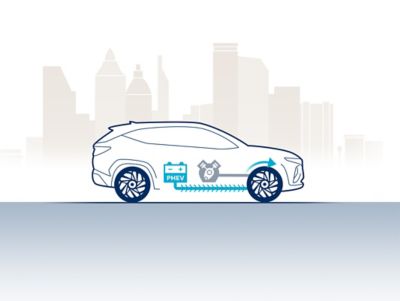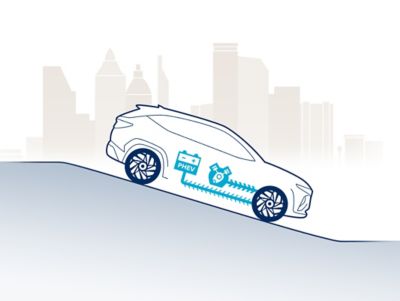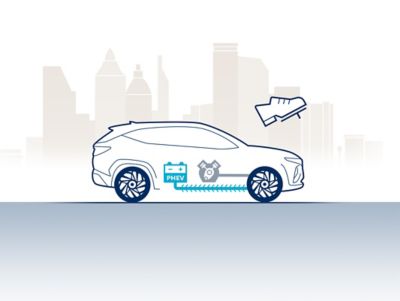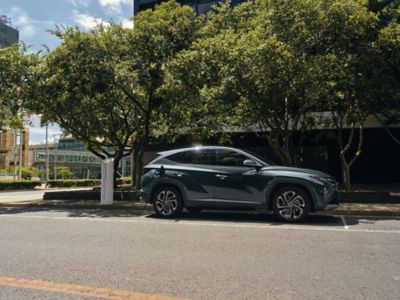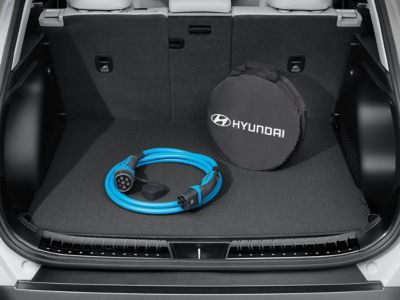The best of both worlds.
Electric when you want it. Petrol when you need it. The new TUCSON Plug-in Hybrid offers the best of both worlds. Enjoy 71 km of full-electric driving range.1 And once the electric-only range is depleted, you can plug into a charging station – or just continue on with the petrol engine.

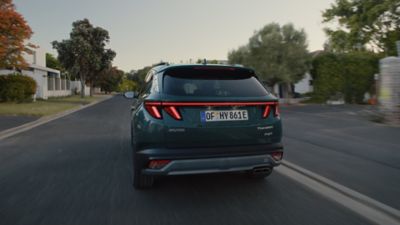
Performance
Plug-in hybrid power.
The TUCSON’s plug-in hybrid system delivers maximum fuel efficiency and some serious driving thrills. It is based on the potent combination of the 1.6-litre T-GDi Smartstream engine paired with a 72 kW electric motor, powered by a 13.8 kWh lithium polymer battery. Together, the gasoline engine and electric motor deliver 252 PS maximum power and 304 Nm maximum torque.
Energy flow – how Tucson Plug-in Hybrid works.
Depending on the driving situation, the Tucson Plug-in Hybrid switches seamlessly between its petrol engine and electric motor, sometimes using both. The regenerative braking system charges the battery by using the electric motor to slow the car. The energy stored in the battery then powers the electric motor to help in acceleration, uphill driving and low speed driving. This complex energy flow is illustrated in these animations.

Charging
Plug-in.
You can charge the TUCSON Plug-in Hybrid at a public AC charging station, a home wall box or domestic wall socket. And when you’re plugged in at home, you can remotely schedule charging via your smartphone and the Bluelink® app during low-demand hours for lower rates.
